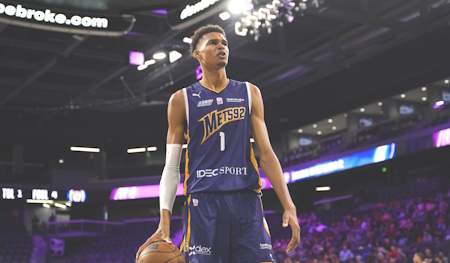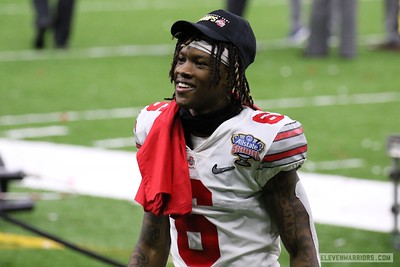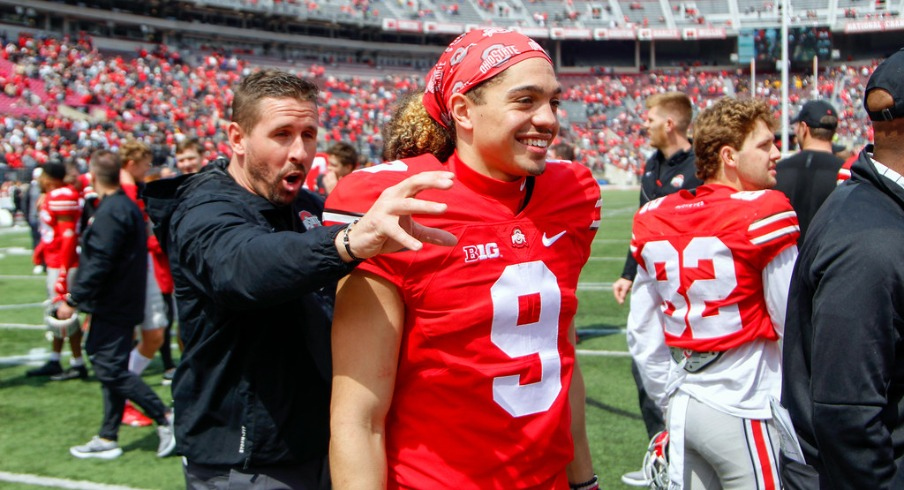You're about to hear a lot about Victor Wembanyama.
Wembanyama is a 19 year-old French basketball player who will be the first pick in the upcoming NBA draft. Generally considered to be the best basketball prospect since LeBron James, Wembanyama is a 7 foot, 2 (or 3 or 4 or 5, it's not super clear to me) inch ostensible power forward/center combo with incredible handles, a great shot, and length that makes his mid-range game all but unstoppable.
There are some legit concerns that a skeptical fan of the San Antonio Spurs (Wembanyama's destination in the Draft unless someone in their front office has a psychotic episode) might have of a guy seemingly only slightly more solid than a beach umbrella; aside from his extremely thin build and associated questions about durability, he's still a work in progress in a few key areas of his game. But those are mostly quibbles, and the dude will be the No. 1 pick in the NBA Draft for a reason.

He's really, really, really good, and the Spurs will bring in their shiny new player with the expectation that he becomes the next David Robinson or Tim Duncan or both at the same time.
But, more specifically, Spurs fans will expect Wembanyama to lead them to the NBA finals, and in short order. Whether or not that's actually feasible, if he's as good as most people think he'll end up being, Wembanyama will have an entire career to figure it all out.
The hype around this kid is insane, and as a professional basketball player, he's made it: while there are tangible goals he might have for his future as an athlete, he's already a success story from a purely financial perspective.
That's why, in light of the upcoming NBA Draft, I was thinking about some of the comments made recently by Brian Hartline in regards to his stacked wide receiver room, and the propensity for transfers out of the program:
“And frankly, what they feel is right is up to them. But it is just tough, man. I think at the end of the day, they feel like they have a four- to five-year window and they're just trying to give themselves the best chance.”
And then:
“Typically, the more talent you have, the more you're demanding of the player. And then the more you demand of the player, the more of the growth you're probably going to get for each individual,” Hartline said. “So the goal is to continue to add the best players in the country to the room to allow them to push those that are currently there and those that are coming. So that's always the goal and that's what we're going to try to do.”
"You're" in this context means "coaches", but in a slightly different context it could also apply to fans.
The standard of success that we as fans apply to gigantic recruits that come to Ohio State is whether or not those players help contribute to winning on the field; against Michigan, and in Big Ten and national championships. That's not an unreasonable standard because it is the standard: coaches, players, and administration are all held to it because Ohio State has the resources to do these things and a history showing that it's feasible.
If you look at the top recruits all-time at Ohio State, there are a lot of guys who lived up to at least the hype built up around them from a purely athletic standpoint. Terrelle Pryor, Ted Ginn, Jr., Nick Bosa, and Chase Young (among others) had incredible Ohio State careers by almost any metric, except one: winning a national championship.
That lack of a natty didn't hurt any of these guys in their ability to make money in the NFL, but what I find interesting is the incongruity between what fans see as "success" for hyped incoming recruits, how they themselves view "success" in terms of their careers as athletes, and what effect the transfer portal has on both.

To be clear, I don't think most fans think of these guys purely in some binary of being a legend or a bust based entirely on whether or not they win a national championship, but I do think that greater athlete mobility means that the scale has tipped towards their priorities (whatever those may be) over that of the team that's offered them a scholarship and the fans that cheer said team on.
This isn't a bad thing (truthfully I think it's a well-deserved boon for athletes who for far too long have been treated like a commodity rather than employees, which they essentially are), and what's interesting to me is that if we want to keep the culture of hyping up incoming recruits to the moon, we're now going to have to accept that they can now leverage that hype to get more money or better playing opportunities elsewhere. It's a transactional relationship, and always has been, but because athletes have more autonomy it changes how we have to reckon with it.
With that said, I'm optimistic for the relationship between players and fans. When Jameson Williams transferred to Alabama, the reactions here at 11W were mostly positive, and maybe that's a sign that we've collectively come to accept that college football players, especially the ones we've placed the greatest expectations on, have every right to use those expectations as a driver of their own goals when it comes to football, goals that might not always include staying in Columbus for their entire careers.
With that said, I can't deny selfishly being extremely stoked when I read about big time recruits being as committed to Ohio State as we need them to be.
After all, they're really, really, really good.


